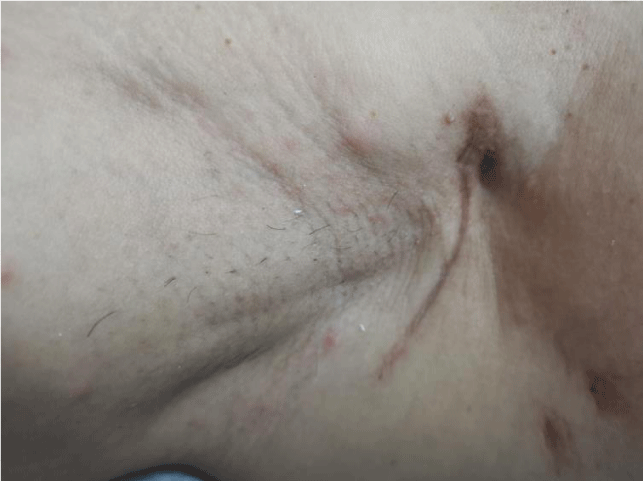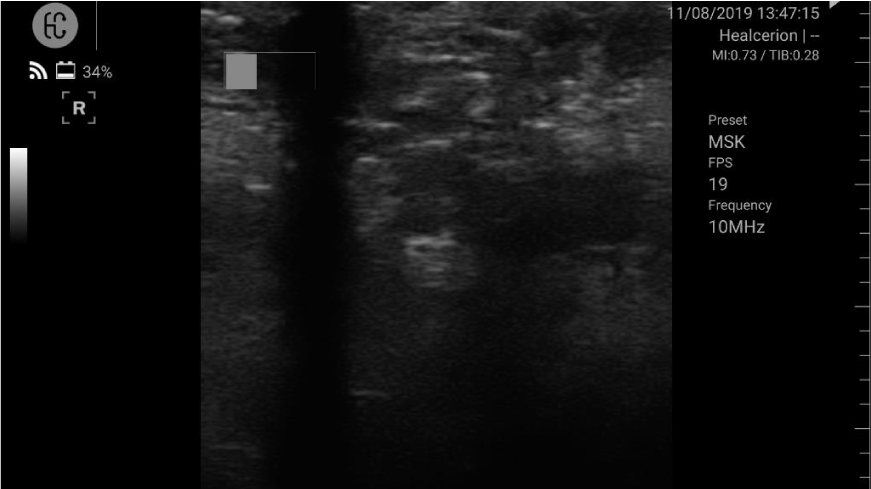Journal of Novel Physiotherapy and Physical Rehabilitation
Chronic axillary web syndrome: 83 months post lumpectomy-A Case report
Laura F Rezende1*, Ricardo Laier Franco2, Vanessa Fonseca Vilas Boas1, Juliana Lenzi2, and Regiane Luz Carvalho1
1Medical School, State University of Campinas-UNICAMP, Campinas-SP, Brazil
Cite this as
Rezende LF, Franco RL, Vilas Boas VF, Lenzi J, Carvalho RL (2020) Chronic axillary web syndrome: 83 months post lumpectomy-A Case report. J Nov Physiother Phys Rehabil 7(1): 013-014. DOI: 10.17352/2455-5487.000069Introduction: Axillary Web Syndrome (AWS) is well described until 3 months postoperative breast cancer surgery.
Methods: We report a case of a 47 years old patient that arrived our rehabilitation service with pain and limited shoulder range of movement in the ipsilateral side of a breast cancer surgery.
Results: An Axillary Web Syndrome was diagnosed 83 months after the surgery.
Conclusion: It is important to mention that AWS might persist for a long time and also affect patients a long time after the surgery.
Introduction
Currently, axillary lymphadenectomy (ALN) is a staging procedure for breast cancer surgery and also an important prognostic factor. However some complications such as Axillary Web Syndrome (AWS) might happen. AWS is a common complication in the early postoperative breast cancer surgery. The incidence is variable probably because it is misreported and misdiagnosed. The features of AWS are fibrotic and painful bands or “cords” in the axilla, that might extend along the anterior and medial part of the arm, across the antecubital fossa and may reach the radial part of the wrist and the base of the thumb. It also might be found in the lateral chest wall, breast and abdomen [1,2].
Case report
M.C.L., female, 47 years old, married, two sons, BMI 25.8 kg/m2, arrived our rehabilitation service complaining of intense pain in the breast and in the axilla, mainly around the axilla scar, where ALN was done. She was submitted in 12/18/2012 to right breast lumpectomy and axillary clearance. Histopatology showed a 1.9 x 1.7 cm ductal invasive carcinoma and 4 positive limph nodes in 40. After the surgery she received adjuvant chemotherapy, radiotherapy and hormonetherapy (tamoxifen 20mg). The physical examination showed limited shoulder range of movement (85 degrees of flexion and 70 degrees of abduction), with the presence of two palpable fibrous cords on the skin surface originating from the axilla (coincident with the axillary scar with significant tissue fibrosis), extending from the medial region of the arm to the elbow with also had important lymphatic stasis in the right breast. M.C.L. was unable to perform shoulder and elbow flexion simultaneously due to pain.
An ultrasound with Healcerion Sonon 300L® device was done by a technologist using a 10MHz probe to complement the diagnose. Ultrasound showed an hypoechoic image with strong posterior shadowing. The exame also showed deformation of the dermis with shoulder abduction. The hypoechoic image was compressible with pressure.
Discussion
AWS is used to develop in the majority of cases within three months following ALN, more often in first post-operative week1. A recent prospective study suggested that 94% of patients who developed AWS diagnosed it within the first month. However, there are some reports showing that AWS may appear or persist well beyond that 12-week window to as late as 2 years after axillary surgery [3]. The incidence is higher in surgery with axillary clearance (36%–72%), compared with surgery with sentinel lymph node biopsy (11%–58%) [4].
Typically, AWS occurs within the first 8 weeks after axillary surgery with symptoms resolving within the first 12 weeks postoperatively [5]. The recurrence is not common, but late incidence of AWS was 16.2% at 3 months, 23.4% at 6 months, 29.2% at 12 months, and 36.2% at 24 months post-operative in a prospective study [6]. One study showed a 50% prevalence of AWS at 18 months after surgery [2].
Conclusion
As far as we know there are no report published showing a so late case of AWS. It is important to mention that AWS might persist for a long time and also affect patients a long time after the surgery. Chronic AWS occurs with limited shoulder range of movement and intense pain. Due to this it is very important the diagnose and treatment of AWS to improve the quality of life in patients after breast cancer treatment.
- Yeung WM, McPhail SM, Kuys SS (2015) A systematic review of axillary web syndrome. J Cancer Surviv 9: 576-598. Link: https://bit.ly/2VyXPri
- Koehler LA, Blaes AH, Haddad TC, Hunter DW, Hirsch AT, et al. (2015) Research report movement, function, pain, and postoperative edema in axillary web syndrome. Phys Ther 95: 1345-1353. Link: https://bit.ly/2yFnJR6
- Baggi F, Nevola Teixeira LF, Gandini S (2018) Axillary web syndrome assessment using a self-assessment questionnaire: a prospective cohort study. Support Care Cancer 26: 2801-2807. Link: https://bit.ly/3bE3DVQ
- Koehler LA, Haddad TC, Hunter DW, Tuttle TM (2019) Axillary web syndrome following breast cancer surgery: symptoms, complications, and management strategies. Breast Cancer (Dove Med Press) 20: 13-19. Link: https://bit.ly/2Kzyd7q
- O’Toole J, Miller CL, Specht MC (2013) Cording following treatment for breast cancer. Breast Cancer Res Treat 140: 105-111. Link: https://bit.ly/2Kzy7N6
- Harris SR (2018) Axillary Web Syndrome in Breast Cancer: A Prevalent But Under-Recognized Postoperative Complication. Breast Care (Basel) 13: 132-135. Link: https://bit.ly/35bkahS
Article Alerts
Subscribe to our articles alerts and stay tuned.
 This work is licensed under a Creative Commons Attribution 4.0 International License.
This work is licensed under a Creative Commons Attribution 4.0 International License.



 Save to Mendeley
Save to Mendeley
